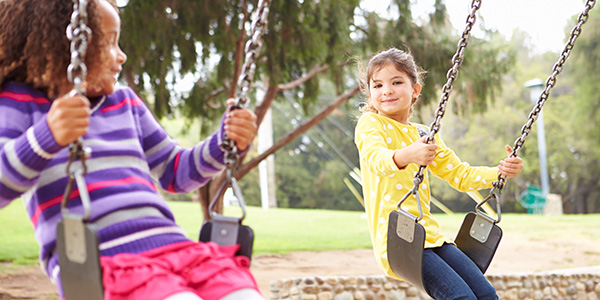During 2019, more than 6,100 Kansans representing all 105 counties contributed to this work. We intentionally reached out to hear directly from parents and caregivers, family members, providers, and local leaders. We also intentionally gathered information in a variety of formats, from in-person meetings such as Parent Cafés, Community Engagement Sessions, and facilitated Visioning Sessions, to online offerings like our weekly emails, biweekly webinars, story collection efforts, and an online share form.
Planning Methods and Contributors
- Collected and analyzed challenges and Bright Spots from 81 online respondents
- Held 53 Community Engagement Sessions across Kansas with 1,337 total participants
- Facilitated 20 Visioning Sessions with 510 participants
- Hosted 14 Parent Cafés with 130 parents/caregivers
- Collected and analyzed more than 2,600 personal stories from the Our Tomorrows project
- Collected ideas from more than 400 attendees at the Governor’s Symposium on Early Childhood
- Collected ideas for priorities and strategies from 116 online respondents
- Traveled around the state — hosting 10 sessions with 183 participants — to present Needs Assessment findings and facilitate conversations on priorities and goals
- Collected feedback online and in-person on draft goals from 120 respondents
At every turn we listened, learned, and collected evidence about both the current status of the Kansas early childhood system and what Kansans envision it to be. This process uncovered many Bright Spots (success stories) to shape a new strategic plan. We analyzed this massive amount of qualitative and quantitative data and then transformed the results into a comprehensive Needs Assessment and the preliminary framework of our strategic plan. As the early ideas of this plan began to form, our conversations shifted from data collection to asking for specific strategies and tactics Kansans want to focus on. We heard personal stories, specific challenges and opportunities, innovative approaches, and action steps we can all take together to build the future we want for our children and families.  In October 2019, more than 400 early childhood stakeholders, including parents, professionals, business leaders, and policymakers, gathered for the Governor’s Symposium on Early Childhood. Governor Laura Kelly’s opening remarks energized an already enthusiastic crowd, including some of our youngest Kansans themselves, while state and local leaders sparked discussion and idea generation for our new plan. Late in the year, we traveled the state again for a 10-stop roadshow to discuss findings from our Needs Assessment and to dive into generating specific ideas and action steps within the plan’s framework. Recognizing the geographic diversity of our state and wanting to hear from as many Kansas voices as possible, we continually asked for feedback through our online communication channels. We engaged Kansans through our live bimonthly webinars, an online share form, social media platforms, and weekly email updates. The Children’s Cabinet website became an online repository of resources for idea generation with documents such as the initial strategic plan framework and Needs Assessment key findings.
In October 2019, more than 400 early childhood stakeholders, including parents, professionals, business leaders, and policymakers, gathered for the Governor’s Symposium on Early Childhood. Governor Laura Kelly’s opening remarks energized an already enthusiastic crowd, including some of our youngest Kansans themselves, while state and local leaders sparked discussion and idea generation for our new plan. Late in the year, we traveled the state again for a 10-stop roadshow to discuss findings from our Needs Assessment and to dive into generating specific ideas and action steps within the plan’s framework. Recognizing the geographic diversity of our state and wanting to hear from as many Kansas voices as possible, we continually asked for feedback through our online communication channels. We engaged Kansans through our live bimonthly webinars, an online share form, social media platforms, and weekly email updates. The Children’s Cabinet website became an online repository of resources for idea generation with documents such as the initial strategic plan framework and Needs Assessment key findings.  Using these findings, Bright Spots, and the ideas and insights from all the community conversations, online submissions, and stakeholder meetings, we worked across state agencies to build a responsive plan. The All In For Kansas Kids Leadership Team led the process and set the tone for a plan that would be inspirational and actionable. Kansans’ feedback shaped and prioritized the work. We collaborated with subject matter experts across the state to review draft tactics and gather feedback on key concerns: workforce and professional development, smooth transitions to Pre-K and kindergarten, parent leadership and family engagement, early childhood care and education program capacity, access, and quality, universal home visiting models, and safe facilities and environments. In February 2020, a first draft of the plan was presented to the Children’s Cabinet and the Kansas Early Childhood Stakeholders Group for input. It was also shared during the February 2020 bimonthly Early Childhood Systems-Building Webinar and then posted for public comment on the Children’s Cabinet website. This multi-pronged approach to gathering input and processing feedback, beginning in early 2019 with the needs assessment process and continuing through the drafting of this strategic plan, helped ensure that the All in for Kansas Kids Strategic Plan reflected the perspectives of all Kansans. This broad base of perspectives has resulted in a plan that will have a meaningful impact on those closest to the work and the children and families they serve.
Using these findings, Bright Spots, and the ideas and insights from all the community conversations, online submissions, and stakeholder meetings, we worked across state agencies to build a responsive plan. The All In For Kansas Kids Leadership Team led the process and set the tone for a plan that would be inspirational and actionable. Kansans’ feedback shaped and prioritized the work. We collaborated with subject matter experts across the state to review draft tactics and gather feedback on key concerns: workforce and professional development, smooth transitions to Pre-K and kindergarten, parent leadership and family engagement, early childhood care and education program capacity, access, and quality, universal home visiting models, and safe facilities and environments. In February 2020, a first draft of the plan was presented to the Children’s Cabinet and the Kansas Early Childhood Stakeholders Group for input. It was also shared during the February 2020 bimonthly Early Childhood Systems-Building Webinar and then posted for public comment on the Children’s Cabinet website. This multi-pronged approach to gathering input and processing feedback, beginning in early 2019 with the needs assessment process and continuing through the drafting of this strategic plan, helped ensure that the All in for Kansas Kids Strategic Plan reflected the perspectives of all Kansans. This broad base of perspectives has resulted in a plan that will have a meaningful impact on those closest to the work and the children and families they serve.
View the Crosswalk of Strategic Plan Goals to Needs Assessment Key Findings
Guiding Principles
Six guiding principles provided direction for developing goals, strategies, and tactics in this plan. As we implement the plan, we are committed to adhering to these same principles and deliberately taking action that aligns with them.
- Child- and family-centered. Keep the needs and choices of children and families at the forefront of decision-making to ensure they get what they need to thrive.
- Data-driven. Use findings to inform the direction of early childhood care and education services. Routinely seek input and analyze data from multiple sources to ensure resource allocations, policy recommendations, and programming decisions reflect the realities of Kansans.
- Strengths-based. Use language and strategies that foster hope, ensure universal dignity, and describe ideal outcomes that Kansans believe are possible.
- Equitable. Identify areas where children and families experience disproportionate outcomes across race, ethnicity, socioeconomic status, physical and developmental abilities, and geography. Actively assess policies and programs to determine if every child and their family has access to the resources they want and need.
- Transparent and accountable. Communicate often on the status, activities, and progress of this plan. Practice continuous quality improvement toward long-term outcomes. Expect mutual transparency, accountability, and engagement.
- Transformative and dynamic. Build on the strong early childhood foundation in Kansas to align efforts, maximize resources, and transform the child and family experience. Recognize contextual factors and anticipate future trends, so the plan can adapt to the changing needs of children and families.
View the complete All in for Kansas Kids Strategic Plan, or navigate sections using the menu to the left.
